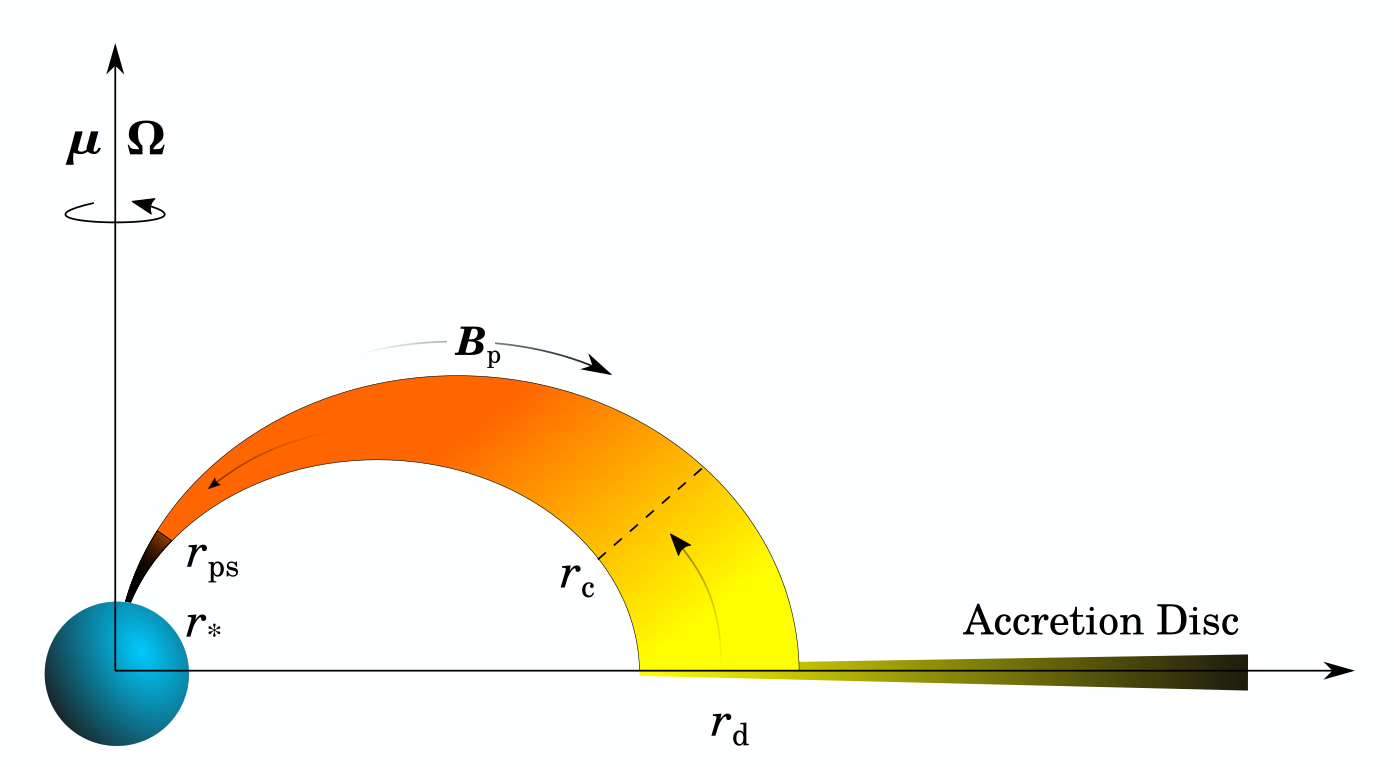Description

Disclaimer: Copyright infringement not intended.
Context
A scientific investigation conducted by researchers from the Inter-University Center for Astronomy and Astrophysics (IUCAA) and the Aryabhatta Research Institute of Observational Sciences (ARIES) in India
Details
- Neutron stars are compact stars with masses comparable to the Sun's but confined to a small space, hosting extreme magnetic fields.
- Inflow of matter onto neutron stars, known as accretion, is a crucial process.
- Neutron stars have high surface gravitational potentials, making them efficient attractors of surrounding matter.
Role of Magnetic Fields in Accretion
- Accretion dynamics are strongly influenced by the star's magnetic fields.
- The strong magnetic field forces infalling matter to flow along magnetic field lines, directing them to the poles of the star.
- Energy emission is concentrated near the poles, where kinetic energy from the matter is radiated.
- This radiation release leads to flow slowing down and settling on the neutron star's surface.
Accretion Flow Composition and Two-Temperature Regime
- Accretion flows consist of ionized plasma containing protons and electrons.
- Electrons, being significantly lighter than protons, undergo different radiative emission processes, resulting in distinct temperature distributions.
Challenges of Two-Temperature Regime and Degeneracy
Complexities in Two-Temperature Regime
- Working in the two-temperature regime is challenging due to degeneracy issues.
- Degeneracy arises from having more variables than equations of motion, leading to multiple solutions and varying observable spectra.
Proposed Methodology to Address Degeneracy
- Scientists from IUCAA and ARIES in India propose a novel method to resolve degeneracy.
- They compute entropy for different degenerate solutions, applying the second law of thermodynamics.
- Solutions with maximum entropy are considered correct accretion solutions, helping to overcome degeneracy.
Non-Adhoc Approach to Solution
- Previous research relied on adhoc assumptions, while this study utilizes various laws of physics.
- Researchers include Shilpa Sarkar (IUCAA), Kuldeep Singh, Indranil Chattopadhyay (ARIES), and Philippe Laurent (France).
Unique Solutions and Radiative Emissions
Computed Unique Solutions and Radiations
- The research team analyzes and computes radiation emitted from the unique solutions.
- Majority of radiation emerges from the region within the neutron star's surface and the "terminating shockwave."
- Terminating shockwave forms due to infalling matter hitting the neutron star's surface at speeds exceeding sound speed.
Role of Rotation and High-Energy Radiation
- Rotation-mediated internal shocks form under specific energy conditions of accretion flow.
- These secondary shocks contribute to high-energy radiation, a novel finding reported in the study.
Significance and Conclusion
- This study marks the first attempt to address degeneracy in two-temperature accretion solutions around neutron stars.
- Approach based on entropy computation contributes to the understanding of physical processes around neutron stars.
|
PRACTICE QUESTION
Q) What distinguishes neutron stars from other celestial bodies and makes them unique?
A) Their ability to emit light and heat due to ongoing nuclear fusion.
B) Their massive size, similar to that of giant gas planets.
C) Their extremely high density and compactness, comparable to a city's size.
D) Their lack of gravitational attraction, resulting in minimal matter accretion.
Answer: C
|

https://dst.gov.in/novel-method-compute-emission-accreting-neutron-stars-can-help-understanding-them











